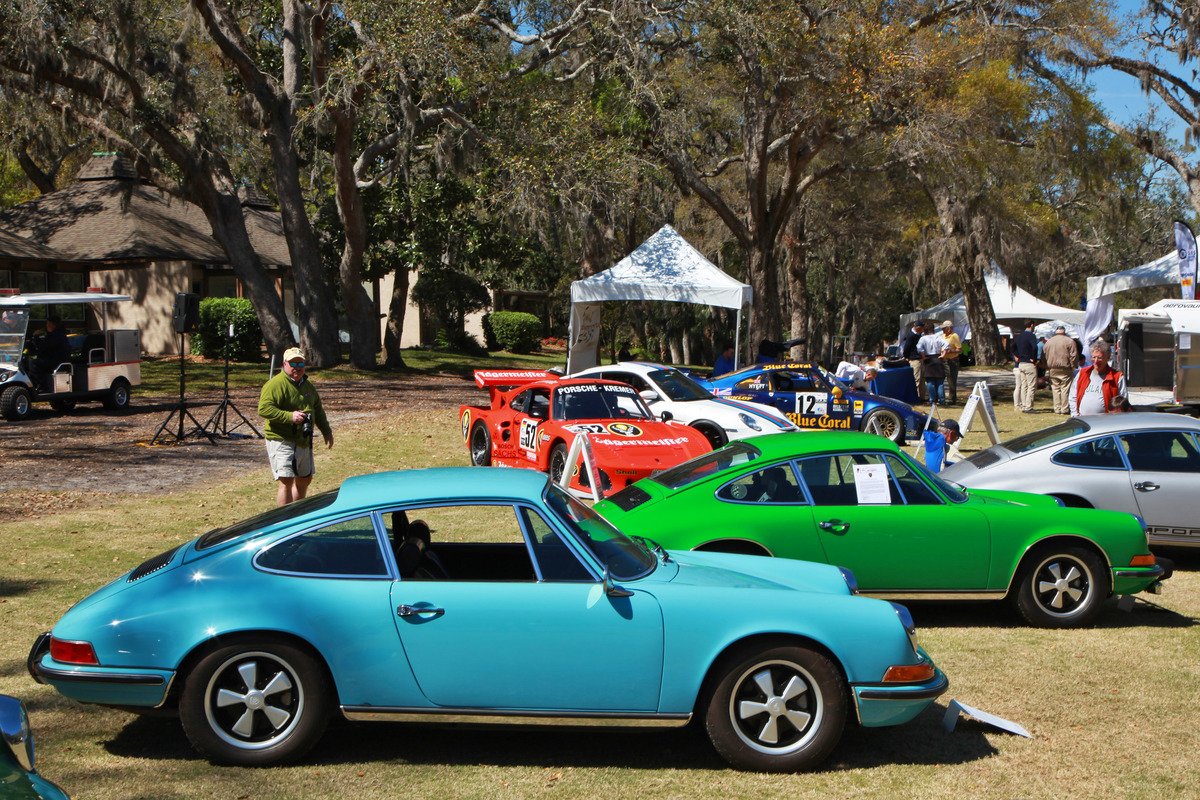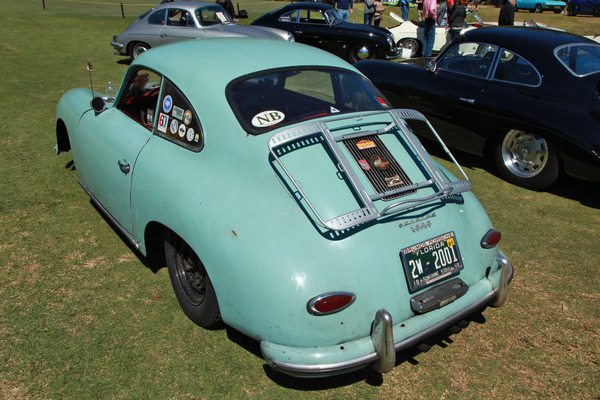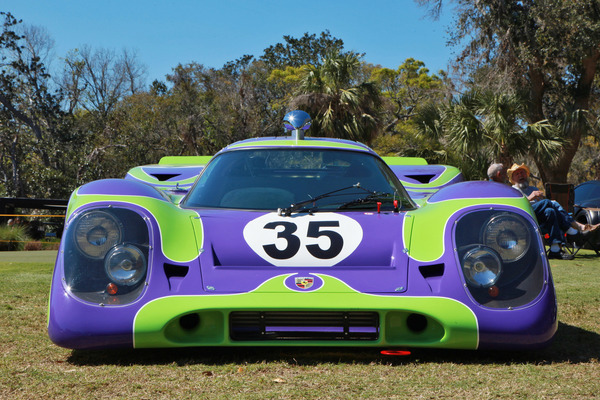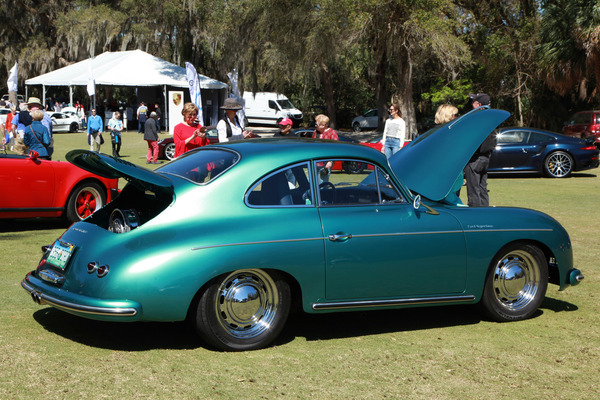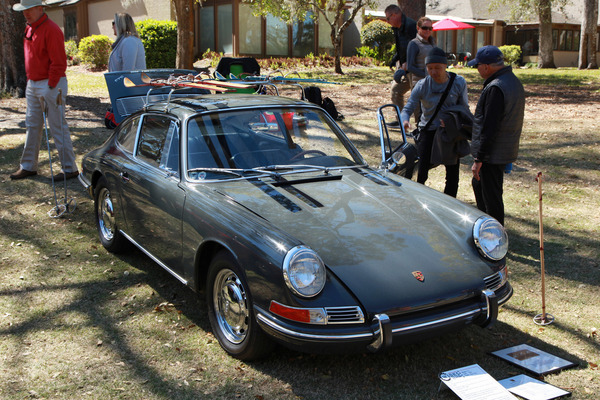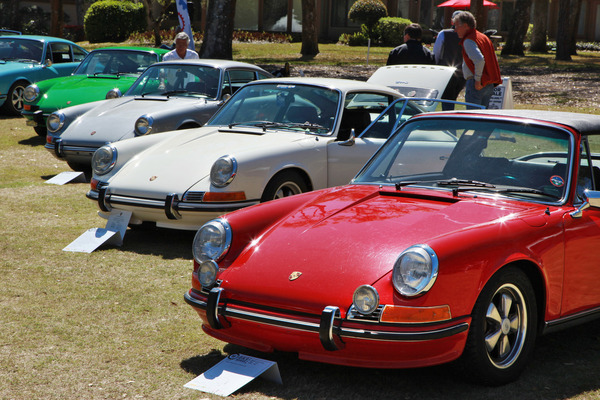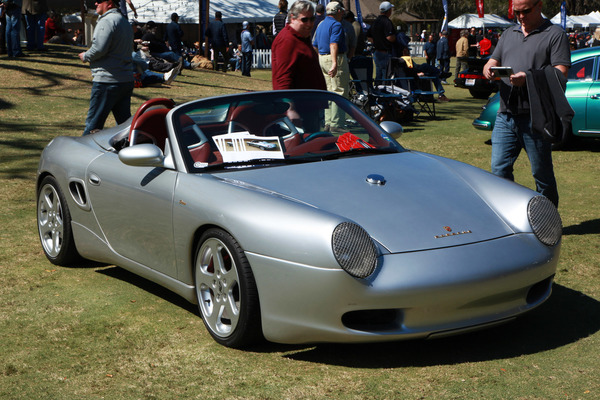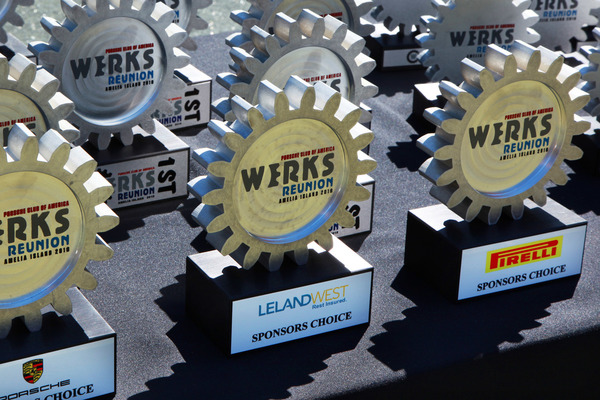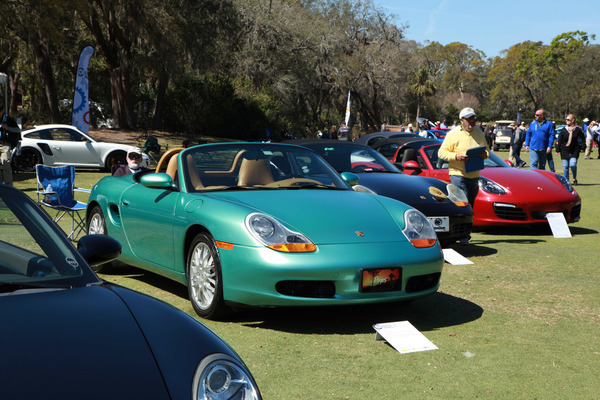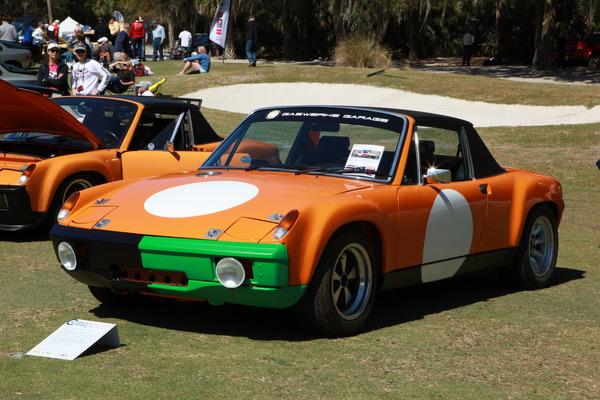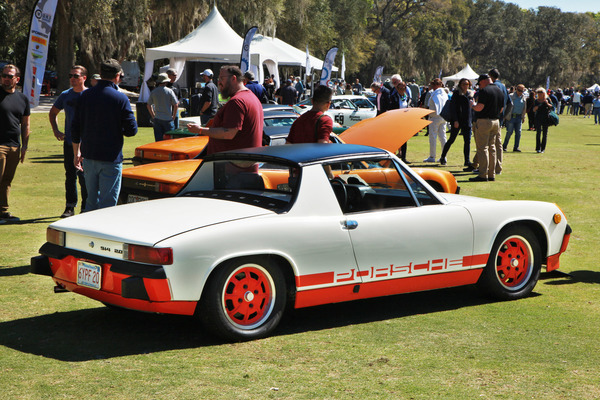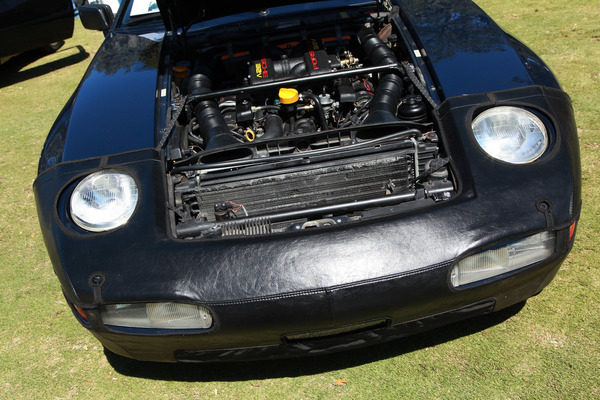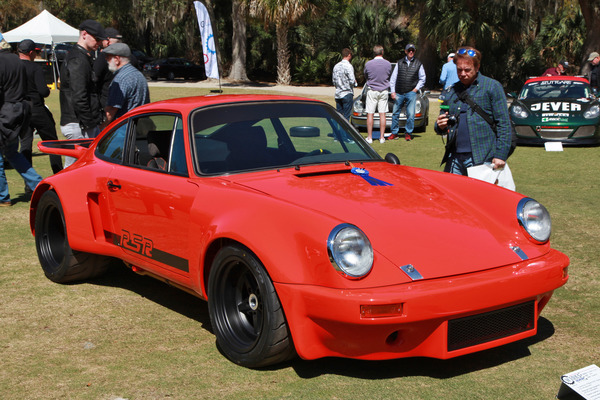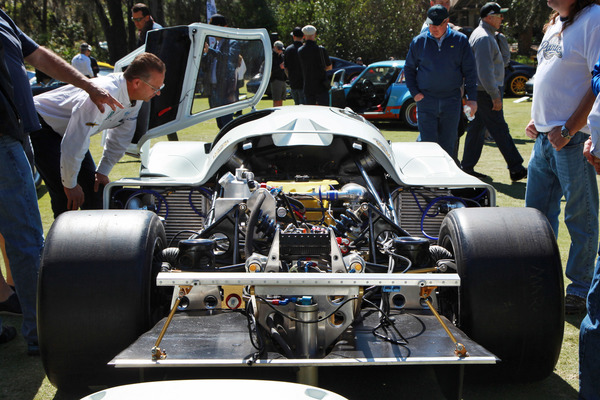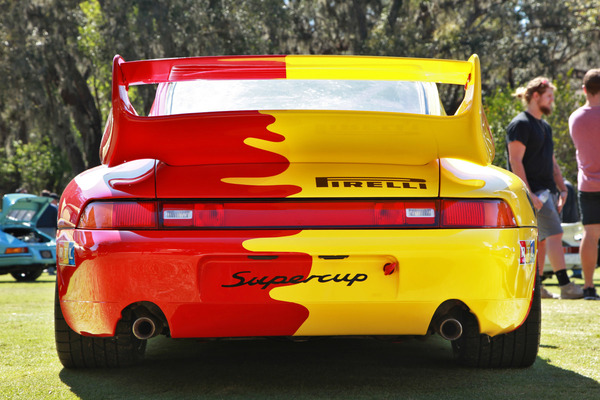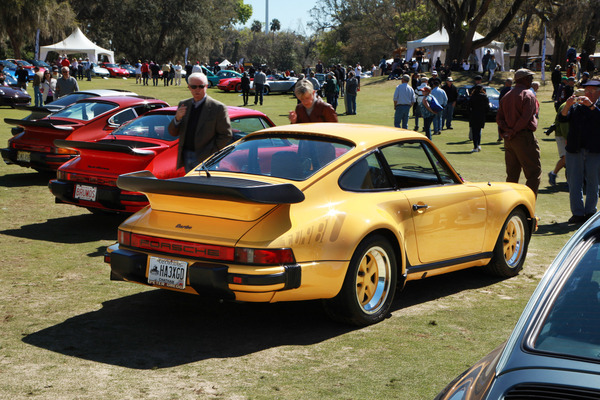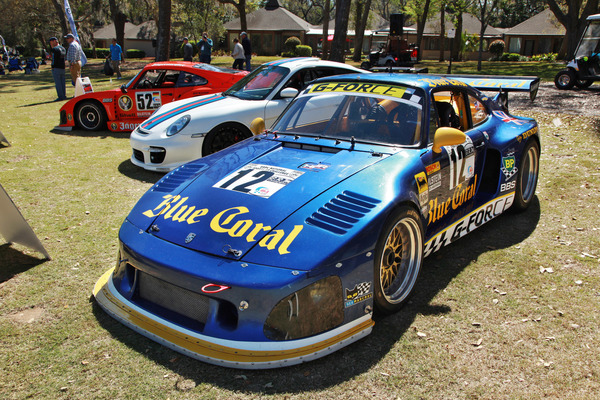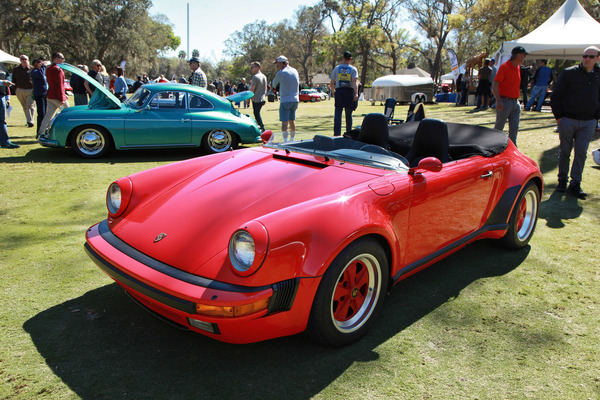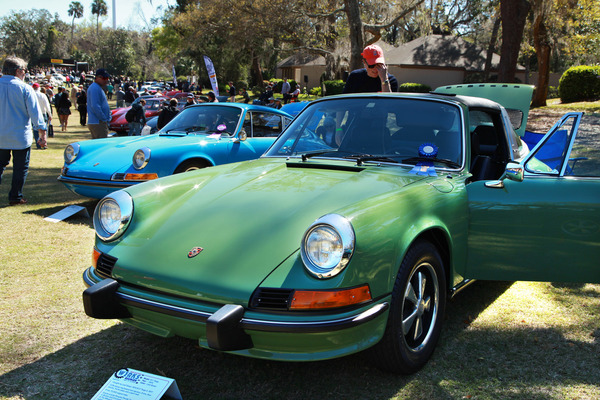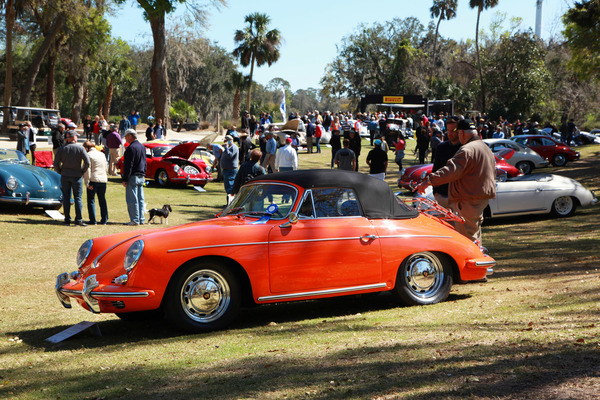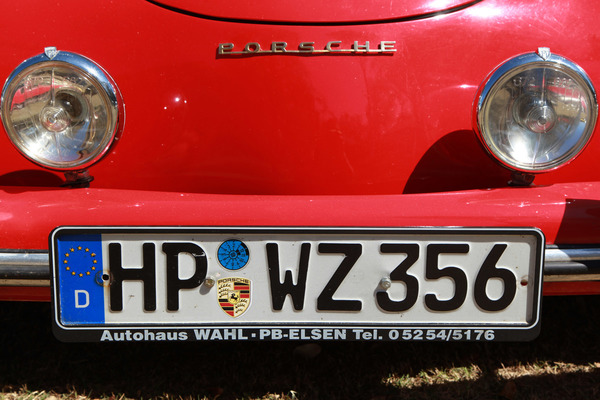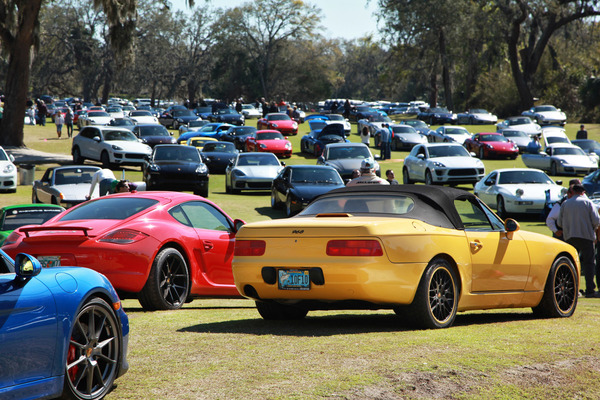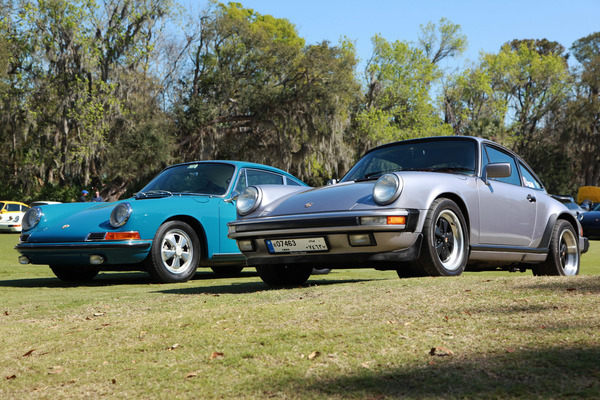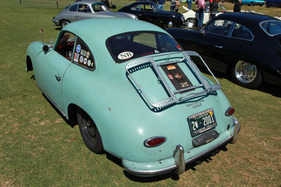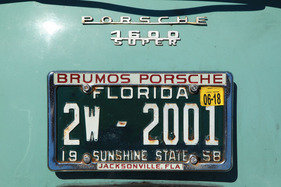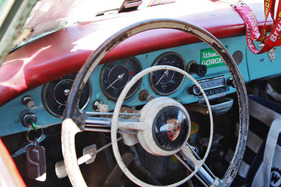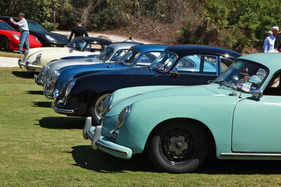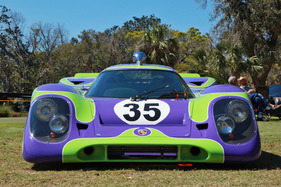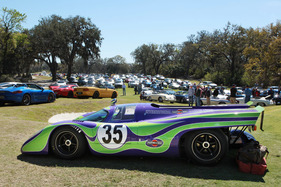There are those classic car fans and connoisseurs who can distinguish the original rear-view mirror from the fake from a distance of 50 meters. Who can identify a factory trunk lining by its smell. Who can assign a standardization number to every washer. And who only accept an automobile classic as such if such details are at least 100 percent correct.
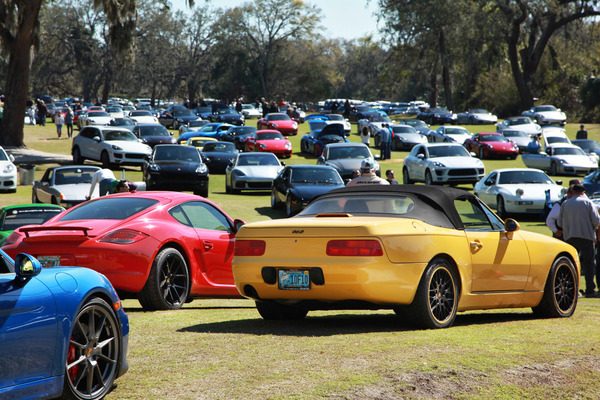
An urgent piece of advice in case you, dear reader, also belong to this species: Never attend the Werks Reunion of the Porsche Club of America. Because what you will see and experience at this event would probably be far beyond your nervous stress horizon.
A meeting with a difference
Porsche reunion - this term only very incompletely reflects what the Werks Reunion is all about. Certainly, with around 800 vehicles parked for a day in a golf course-like park on Amelia Island in the US state of Florida, this meeting is one of America's largest events for an import brand. Nevertheless, what is played here needs to be carefully differentiated.
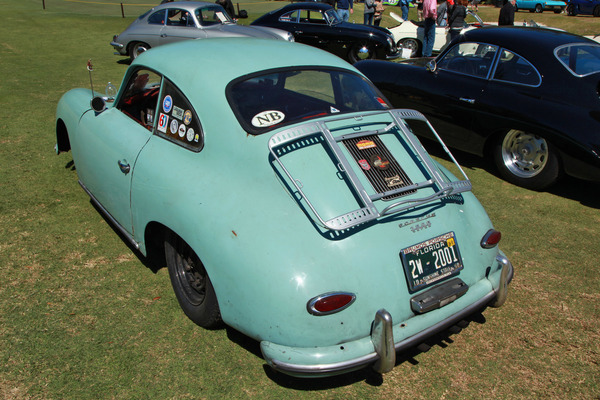
Genuine, pure, unadulterated Porsches in true-to-original design form the minority. Most of the vehicles, some of which come here from as far away as California or even Canada, are as far removed from the title of "Made in Zuffenhausen" as an electric window regulator from a Citroën 2 CV. Within the scene, these types are classified as Outlaws and Rats, Clones and Tributes, among others; all terms that require explanation for the civilized old Europeans.
Rats and Outlaws
Rats are cars on which any cosmetic intervention would have a destructive effect - the state of wear and tear, ranging from the pale, cracked first coat of paint to the crooked bumper to the worn interior, represents a homogeneous total work of art of organic decay. Reliably functioning technology is a must, and artificially tampering with the ruined appearance is frowned upon.

Then there is the outlaw - the "denier of the rule of law", whom the traditionalists have ostracized. Because they fall far short of the original standards, sometimes even mocking them, with a mismatched hood, fake wheels or a home-made exhaust system. The protagonist of this genre, which pays homage to racing without a set of rules, is of course the now world-famous "urban outlaw" Magnus Walker - the Porsche collector whose trademarks are both his long, tousled dreadlocks and his very freely interpreted racing 911s.
The replicas
The term clone refers to a more or less precise replica of a mostly well-known, often unattainable role model. At the Werks Reunion, for example, it is the Rothmans Porsche 959 from the Paris-Dakar Rally that does the honors in convincingly cloned form - among numerous other clones.
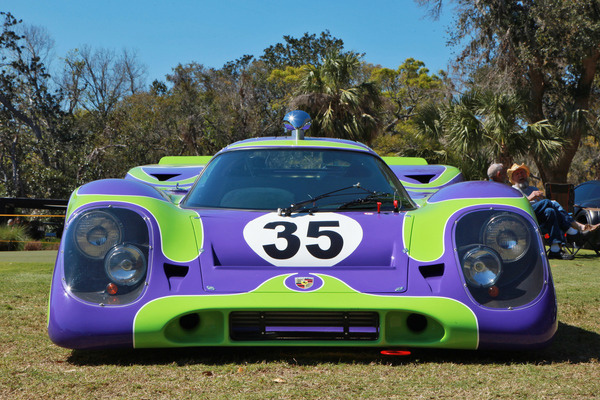
And the tributes? See clones, only freer, more individual, less faithfully executed. However, a Carrera RS rear apron on a 1973 standard 911 alone does not justify its status as a "Carrera RS Tribute". In contrast, the impressive replica of a 917 K, which presents itself in the psychedelic livery of the early seventies, succeeds in doing this - even though only half of the original combustion units that led to the Le Mans victory in 1970 work behind the narrow seat shells with a 911 engine.
Outside the norm
Outlaws, Rats, Clones, Tributes: in view of such definitions, which of course vary greatly, it is almost a relief that most of the Porsches at the Werks Reunion do not belong to any of these categories; they are simply old Porsches that reveal their very own character by means of modern ingredients. For convinced disciples of factory purity, these one-offs subsume themselves into a Gomorrah of blasphemous excesses.

Porsche 356s with LED projection headlights, turbochargers or even all-wheel drive are not everyone's cup of tea. For the sake of completeness, however, it should be mentioned that practically all of these very free, very modern conversions are of a technical perfection that deserves the highest respect and gives the lie to the cliché of the US mechanic that prevails in Europe.
Chassis optimization
Upgrading the chassis of an honorably grey 356 to a 911 chassis is almost standard procedure. Sounds simple enough - until you compare the archaic VW Beetle-like wheel suspension of the original Porsche model with a crank arm axle at the front and swing axle at the rear with that of its successor with wishbones at the front and semi-trailing arms at the rear.
It seems almost easier to equip a 911 with the body of a 356 - not a particularly exotic measure in these circles, whose representatives seem to hold nothing sacred. Fortunately, they bring bright colors to the sometimes rather gray monotony of classic cars.
The never-built factory engine 930/4
The pinnacle of non-factory creations in the scene of wild Porsche modifications is the so-called Polo engine. This is by no means the water-cooled in-line four-cylinder engine from the little Golf brother, as the inclined Central European might think. Instead, it is the four-cylinder boxer with the official type designation 930/4, which the American mechanical engineer Dean Polopolus created a few years ago.
The model was a Porsche factory development that died on the drawing board in 1964 for cost reasons: the four-cylinder version of the 911 six-cylinder with overhead camshafts for the entry-level Porsche 912, which was instead equipped with the much cheaper and, above all, already existing pushrod boxer from its predecessor, the 356.
Four cylinders and two overhead camshafts
Thanks to Dean Polopolus, the shunned noble four-cylinder became a reality after half a century's delay - and Porsche fans were delighted. Despite the price of a good 30,000 dollars. In return, you get two thirds of the cylinders, pistons, connecting rods and cylinder heads of a six-cylinder engine from the 993 generation 911 (3.6 liters, 285 hp), mounted on a crankcase and crankshaft manufactured in-house.
With around 200 hp from 2.4 liters of displacement and a sound reminiscent of the legendary four-camshaft engine from the 356 Carrera, this fascinating engine is just as suitable for VW Beetles as it is for the VW-Porsche 914 or clones of the flat-bottomed 904. And of course for the 356. It is hardly surprising that five of these original Porsches with this heart will be on show at the meeting in Florida.
Cult of personality
The Porsche Club of America, or PCA for short, originally intended the Werks Reunion to be a reunion of the factory employees who once represented the sports car manufacturer in exile in America. A few of these gentlemen will be performing. They are celebrated like heroes by Porsche's particularly enthusiastic US fans.

Among others, Jens Walther and Alwin Springer, two former bosses of Porsche Motorsport North America, are part of the party, are passed around and interviewed, photographed for the family album and asked to sign autographs on the dashboard.
The undisputed star of the Werks Reunion, however, is a man who has never been employed by Porsche - and whose attitudes took the rather conservative management of the Swabian manufacturer a few years to get used to. We are talking about the aforementioned Magnus Walker. By breaking the rules of original standards and values, the "urban outlaw" unleashed an avalanche of models a few years ago that Porsche's sales department could no longer ignore. However, the revolution - similar to the former punk subculture - is also eating its children here: for the original outlaws from Walker's original circle of influence, the shock effect of being different has long since been prostituted in the direction of commerce; an understandable view.
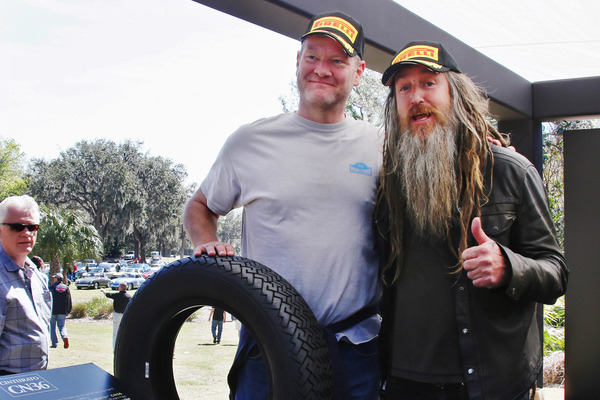
Regardless of this, Magnus Walker is a highly likeable guy who talks shop passionately with his fans - and reveals an almost inexhaustible knowledge of the subject. In fact, there are probably not many Porsche collectors who can philosophize about chassis set-ups or engine versions in such an impressive and similarly self-experienced way. In particular, there are not many pop stars whose core competencies include being able to calculate the control profile of intake cams. It is therefore really convincing when the Los Angeles-based dreadlock racer of British origin praises his favorite ingredients and suppliers.
The right tires
When Magnus Walker says that his Outlaw 911s run on Pirelli tires without exception, it's not because of some advertising contract. It is the incorruptible experience of a competent racing driver. However, the fact that the Italian tire manufacturer is held in the highest esteem in Porsche circles is primarily due to its commitment to the sports car brand: in close cooperation with Porsche Classic, Pirelli now produces practically every classic tread pattern in an authentic look - from the CN 36 for the 356 to the low-profile pioneer P7 for the early 911 Turbo. Which even goes down well with contemporaries who otherwise tend to sneer at fidelity to the original.

In this respect, Pirelli as the "presenting sponsor" of the Werks Reunion is not only very welcome to the PCA as the organizer, but also and above all to the drivers of old Porsches who come here.
No Concours, but prizes
The PCA will not be holding a classic-style Concours d'Elegance at the Werks Reunion. But there are still prizes and trophies. Not for the carefully Q-tipped interior of the exhaust tailpipe, as is customary at Pebble Beach. But rather for the exact opposite - for example, for the dried-on dirt that bears witness to the last or penultimate off-road use. "Original goes before original", the makers of the Werks Reunion would probably say if they spoke German.

After all, most of the American Porsche fans who gather here for a fun rendezvous are familiar with terms such as "racing" or "Autobahn". The latter term in particular conjures up the myth of freedom and unlimited gas mileage. A fact that contributes significantly to the fascination of the Porsche brand for the US clientele.
Twice a year
The Porsche Club of America organizes the Werks Reunion twice a year, at different locations: In March, the event takes place as part of the Amelia Island Concours d'Elegance in Florida, and in August during Monterey Car Week in California, whose highlights include the Concours d'Elegance in Pebble Beach and the Historic Races in Laguna Seca. Admission for visitors is free. Further information can be found on the event website.

